Japanese art boasts a rich history, filled with masters who have shaped its course over centuries. Among these luminaries stands Uehara Konen, a pivotal figure in the shin-hanga (new prints) movement. His work “Hatō zu” (Waves) remains a testament to his skill and vision.
Early Life and Artistic Journey
Uehara Konen was born in 1877 in Asakusa, Tokyo, a city pulsating with cultural and artistic energy. This period, known as the Meiji Era, marked Japan’s transformation from an isolated feudal society to a modern, Westernized nation. Despite the rapid changes around him, which caused a decline in traditional woodblock printing, Konen remained dedicated to his craft.
From a young age, Konen exhibited a deep fascination with art. This passion led him to train under Kajita Hanko and later Matsumoto Fuko, both renowned painters of their time. Under their guidance, Konen honed his skills in Nihonga, a traditional Japanese painting style that emphasizes the beauty of nature.
Konen’s journey took a significant turn when he embraced woodblock printing in the mōrō-tai (modernist style) popular from 1899 to 1909. He was part of the “Sumida River School” (Blue River School), drawing inspiration from Western styles of painting. This influence is evident in the colors, photographic perspective, and experimental nature of his work.
Career and Contributions
The majority of Konen’s work consists of landscape prints, reflecting his deep appreciation for nature. Initially, his drawings were published by Kobayashi Bunshichi. However, the 1923 Kantō earthquake ended this partnership. Subsequently, Shōzaburō Watanabe, a former employee of Bunshichi, resumed collaboration with Konen. The artistic production from this second partnership was largely intended for export, particularly to the American market through the Shima Art Company. As a result, Konen’s prints found their way into many private Western collections.
In 1907, Konen became the secretary of the Kokuga Gyokuseikai (National Painting Cultivation Society), which supported a modern school of painting in Japan. His role in the Imperial Household, the Foreign Ministry, and as a juror for the Tokyo Metropolitan further solidified his standing in the art community. Konen also occasionally collaborated with the esteemed art critic Okakura Kakuzō, enriching his exposure to different artistic perspectives.
The Masterpiece: Hatō zu
Among Konen’s impressive body of work, “Hatō zu” stands out as a crowning achievement. This collection of three prints captures the raw power and beauty of the ocean, a theme that has long fascinated Japanese artists.
A Closer Look at Hatō zu
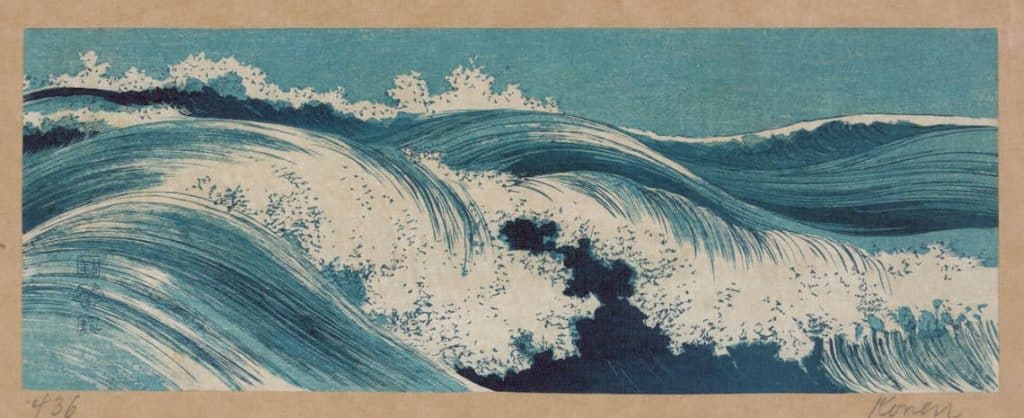
First Print: Dynamic Waves
- Composition: The composition is both balanced and dynamic, with swirling waves dominating the foreground. The movement and energy of the water are palpable.
- Color Palette: Deep blues and whites create a striking contrast, emphasizing the frothy crests of the waves.
- Technique: Konen’s intricate detailing captures the essence of the waves in motion, showcasing his technical prowess.
- Medium: color woodblock print with a size of 9.2 x 24.8 cm.
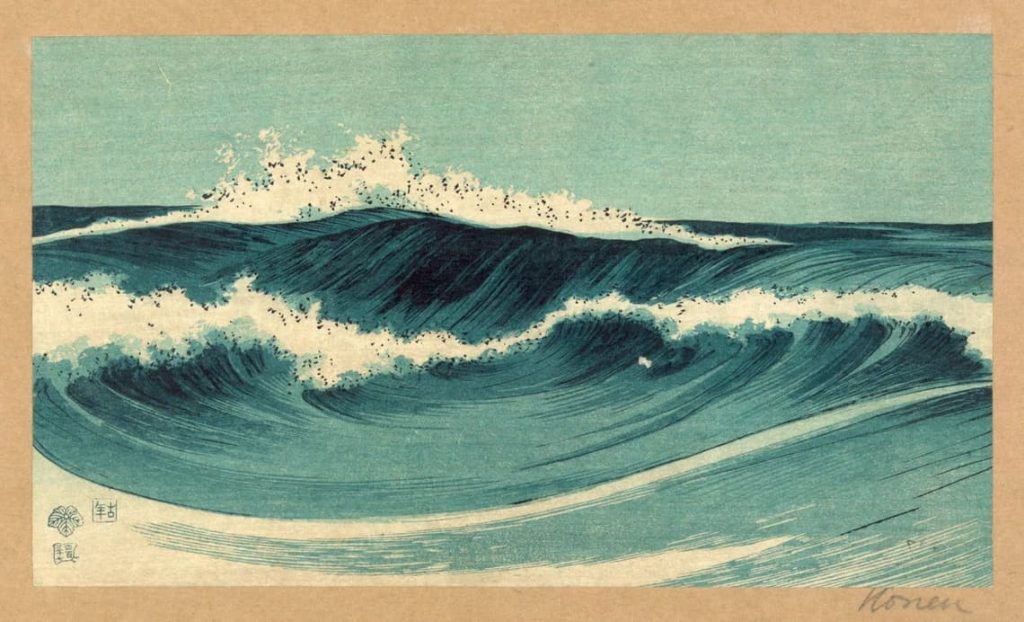
Second Print: Cresting Wave
- Composition: This print focuses on a single, large wave cresting majestically. The central wave draws the viewer’s attention to the power and elegance of the ocean.
- Color Palette: The shades of blue and white continue to dominate, capturing the light and shadow play on the water.
- Technique: The detailed rendering of the wave highlights Konen’s ability to depict the fluidity and force of the ocean.
- Medium: color woodblock print with a size of 12.7 x 22.1 cm

Third Print: Calm Horizon
- Composition: Offering a more serene view, this print features waves gently rolling towards a distant horizon. The scene is calm and tranquil.
- Color Palette: Lighter blues and whites dominate, creating a soothing visual experience.
- Technique: Konen’s precise line work and shading techniques capture the gentle movement of the water, providing a sense of peace.
- Medium: color woodblock print with a size of 10.6 x 35.8 cm
Other Notable Works by Uehara Konen
While “Hatō zu” is arguably Konen’s most famous piece, his portfolio includes several other notable works that deserve attention. Each piece reflects his versatility and depth as an artist.
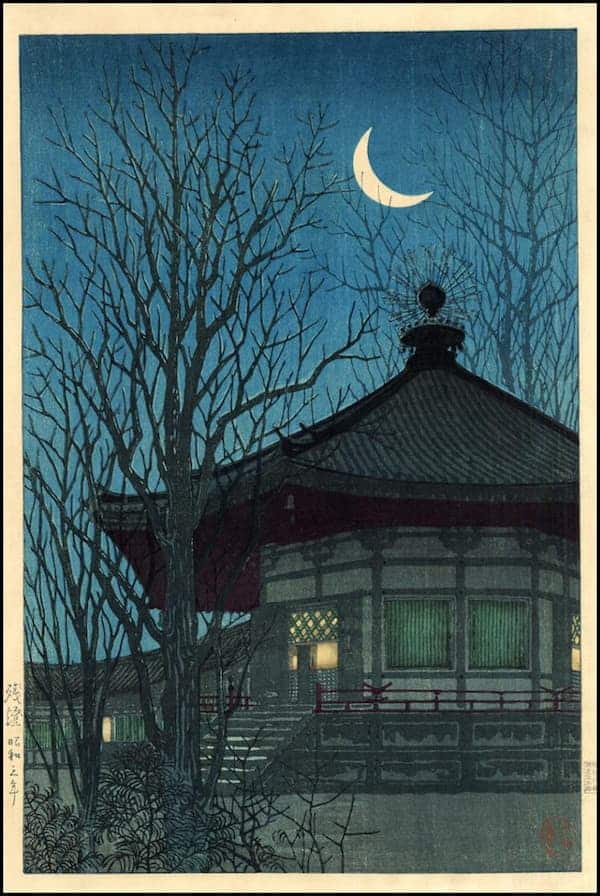
Fading Lamplight of a Pagoda
Created around 1928 this shin-hanga print depicts a crescent moon above a dimly light Pagoda.
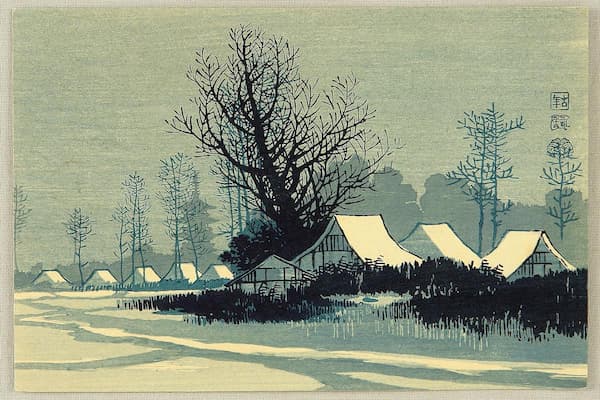
Village Snow Scene
This is known as an azuri-e print, meaning it was created using only blue colors. Created between 1910 – 1920, this woodblock print depicts a village in deep winter before the Great Kanto earthquake of 1923.
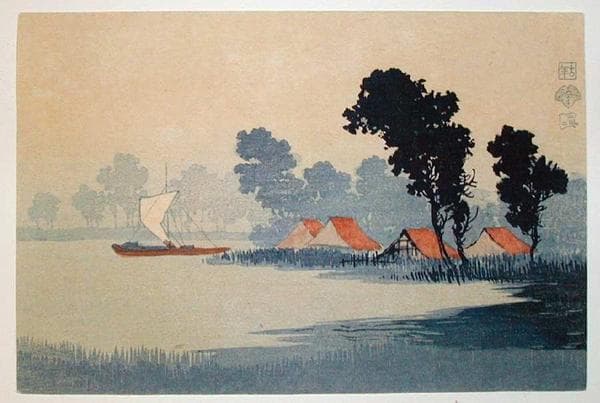
Sailboat on Lake
This pre-earthquake print published by Kobayashi, depicts a dreamy scene of a sail boat and village houses on riverside.
Konen’s Publishers
Uehara Konen’s career was notably influenced by his collaborations with key publishers of his time. Initially, he published his prints with Kobayashi Bunshichi, an influential ukiyo-e dealer who was instrumental in popularizing the art form. Kobayashi was known for organizing the first ukiyo-e exhibition in Ueno Park, Tokyo, in 1898, alongside Ernest Fenollosa. Unfortunately, the Great Kanto Earthquake of 1923 destroyed Kobayashi’s shop and collection, making pre-earthquake prints of Konen extremely rare. After Kobayashi’s death, Konen collaborated with Watanabe Shozaburo, a former employee of Kobayashi, producing prints intended for export during the following decade.
Uehara Konen’s Legacy
Uehara Konen’s contributions to the shin-hanga movement and Japanese art are profound. His ability to blend traditional techniques with modern influences resulted in a unique and enduring body of work.
Revitalizing Ukiyo-e
The shin-hanga movement, which Konen was a part of, played a crucial role in revitalizing ukiyo-e. By incorporating Western painting techniques, artists like Konen breathed new life into traditional woodblock printing. This fusion created a fresh and dynamic art form that appealed to contemporary audiences while honoring traditional Japanese aesthetics.
Influence on Contemporary Artists
Konen’s work continues to inspire contemporary artists in Japan and beyond. His ability to capture nature’s beauty and his innovative approach to composition and color serve as a source of inspiration. Many modern artists draw upon Konen’s techniques and themes, ensuring that his legacy lives on.
International Recognition
Konen’s work gained international acclaim, particularly in the West. Collectors and art enthusiasts worldwide recognize the significance of his contributions to Japanese art. Exhibitions of his work continue to attract attention, showcasing the timeless appeal of his art. His works are held in several important institutions, including the British Museum in London, the Art Institute of Chicago, the Library of Congress in Washington, and the Museum of Fine Arts in Boston.
Conclusion
Uehara Konen’s life and work represent a bridge between traditional Japanese art and modern influences. His masterpiece “Hatō zu,” a collection of three distinct yet harmonious prints, remains a powerful testament to his skill and vision. Through his other notable works, Konen’s legacy as a master of shin-hanga endures. As we continue to appreciate and study his art, we honor his contributions to the rich tapestry of Japanese cultural history.
References:
- Wikipedia France. “Uehara Konen.” Wikipedia France.
- “Uehara Konen Publishers.” Scholten Japanese Art.
Read our ultimate guide: Collecting Ukiyo-e Art: A Guide for Beginners
Read more:
- Where Can I Buy Ukiyo-e Art? Here’s where to find those rare prints
- 9 Reasons for the Importance of Mount Fuji in Japanese Culture
- Mori Yuzan and Hamonshu: Japanese Wave Designs
- The Serenity of Circles: Exploring the Importance of Circles in Japanese Art and Culture

At the Art of Zen we have a selection of original Japanese art prints in the ukiyo-e and Japandi style. Some of our best selling work is Mount Fuji wall art and Japandi wall art.
Add some zen to your space with some art from the Art of Zen shop.
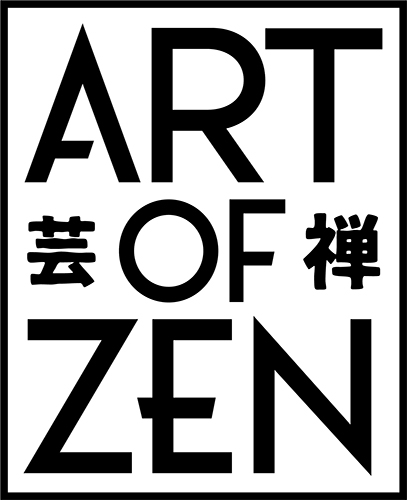
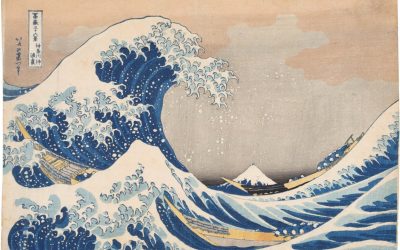
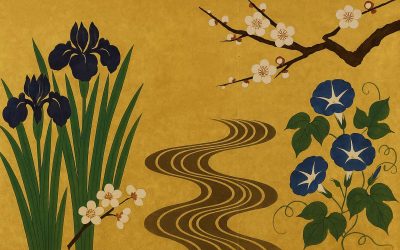

0 Comments